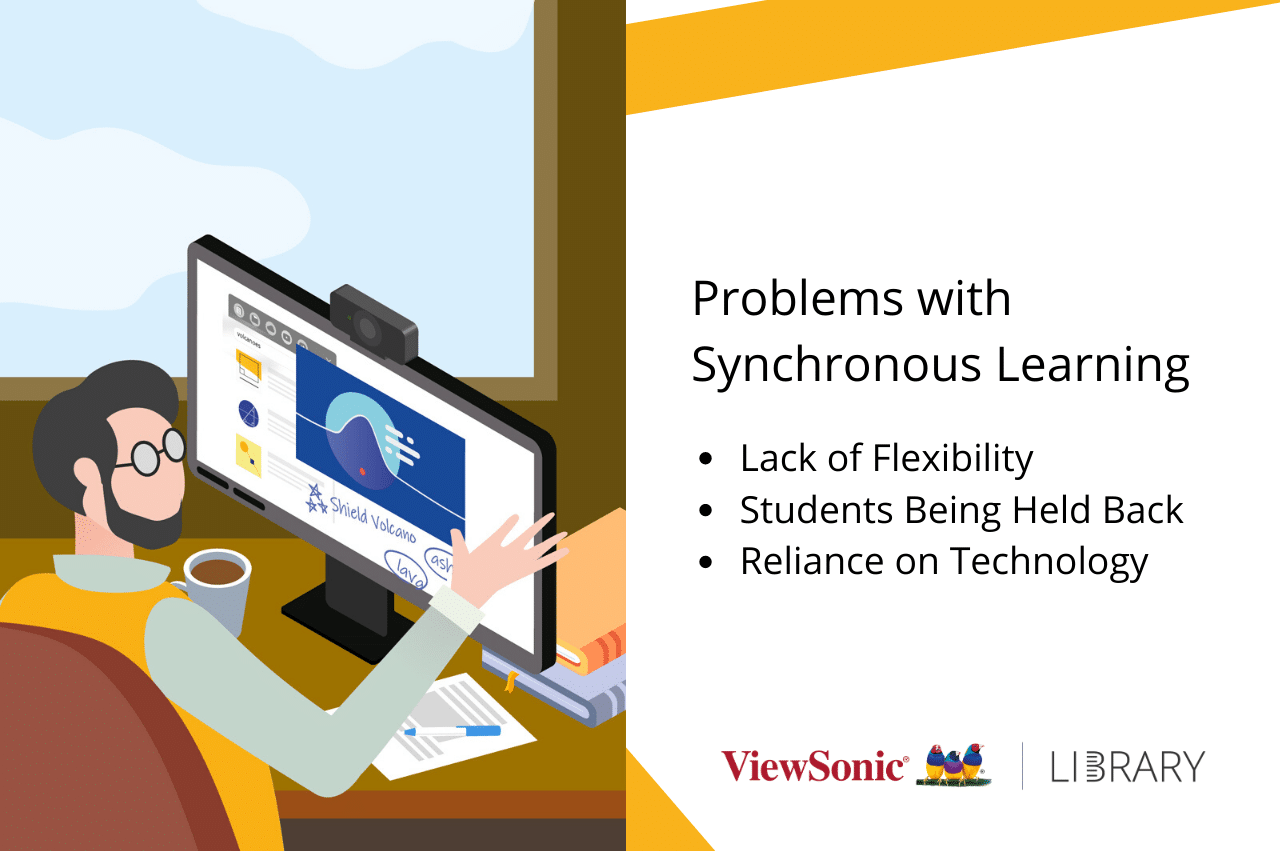Synchronous distance learning – where the learning group interacts at the same time, from different physical locations – is one of the major forms of distance education, and it offers a number of key advantages for educators and students alike. However, it can also be important to understand some of the limitations and challenges that are associated with this form of learning as well.
Read on to find out more about both the pros and cons of synchronous distance learning.
Distance learning can be broadly defined as a form of education, where the teacher(s) and student(s) are separated geographically and connected through telecommunications. Yet, underneath the distance learning umbrella, there are a number of different delivery types or approaches, with synchronous distance learning being one of these.
Put simply, this is a model where the people teaching and the people learning have some form of live interaction, meaning they engage in education-related activities at the exact same time, despite being physically separated. However, this approach has both advantages and disadvantages, which both need to be explored and understood.

What is Synchronous Distance Learning?
It can be useful to have a clear idea of what distance learning is and why it is useful before attempting to define synchronous distance learning. Once equipped with this knowledge, a useful definition is as follows:
SYNCHRONOUS LEARNING: A GENERAL TERM USED TO DESCRIBE FORMS OF EDUCATION, INSTRUCTION, AND LEARNING THAT OCCUR AT THE SAME TIME, BUT NOT IN THE SAME PLACE. MOST COMMONLY APPLIED TO VARIOUS FORMS OF TELEVISUAL, DIGITAL, AND ONLINE LEARNING IN WHICH STUDENTS LEARN FROM INSTRUCTORS, COLLEAGUES, OR PEERS IN REAL-TIME, BUT NOT IN PERSON.
The above definition, provided by the Glossary of Education Reform, outlines the “live” nature of synchronous learning, which is what distinguishes it from asynchronous distance learning. However, crucially, it also draws a clear distinction between synchronous learning and in-person education, where people are in the same location.
On the flip side, you can also learn more about asynchronous learning.

Advantages of Synchronous Distance Learning
Synchronous learning has a number of key benefits or plus points when compared to other distance learning delivery models. Some of these key advantages are outlined below:
1. Structured Learning
One of the main plus points associated with synchronous distance learning models is the level of structure that is provided in the process. As the learning group is required to participate simultaneously, these sessions provide clear guidance on how quickly work needs to be done and helps to control the pace of learning.
This structure can be excellent for keeping the learning group on track, collectively, and can also help to avoid situations where certain members of the group fall behind or struggle to pace themselves appropriately.
2. Increased Interaction
Synchronous learning allows the entire learning group to interact in real-time, which offers a number of advantages. First, it can help to alleviate the sense of isolation that can come from distance learning models that do not offer this kind of interaction, and this can be beneficial for improving student engagement and maintaining interest levels.
Moreover, synchronous learning allows for things like group activities and real-time collaboration to take place, which offers teachers some useful ways to vary lessons and ensures that people with different learning styles are catered for.
3. Direct Instructions
Finally, a major plus point of synchronous distance learning is the ability for the teacher to provide some degree of direct instruction to the learning group. This means that teachers can easily explain concepts to the group and then go into more detail if people are struggling to understand anything.
By observing some of the student interactions, the teacher can potentially correct mistakes, while if students have any questions, they can have them answered there and then, in real-time, with the option for follow-up questions.

Problems with Synchronous Distance Learning
Although synchronous learning has clear plus points, it is essential to have a rounded understanding and this means getting to grips with some of the negatives, drawbacks, or potential problems, including:
1. Lack of Flexibility
Perhaps the single biggest challenge associated with synchronous distance education is the inherent lack of flexibility it provides. The learning group all needs to be present, using whatever telecommunications technology has been agreed upon and this insistence on live sessions means the entire learning group has to engage at set times.
This method of learning may not be ideal for those who prefer to learn at their own pace, or as and when free time presents itself. It also presents real challenges when it comes to having students in different time zones on a course.
2. Students Being Held Back
Another potential problem with synchronous distance learning is the fact that the learning pace is set by the teacher, rather than the student. Although this does provide structure, it also has the potential to hold certain students back, as the entire learning group must progress at roughly the same speed in order for the live lessons to make sense.
This may not be ideal for students who have a lot of spare time to invest in their learning and who may, therefore, want to keep pushing forward at a faster pace than the teacher has decided upon.
3. Reliance on Technology
It is also worth noting that while modern digital technology has helped to facilitate synchronous distance education, over-reliance on this technology can also potentially be a disadvantage. After all, synchronous sessions will often rely on things like video conferencing, which is, in turn, hugely reliant on having enough bandwidth to support it.
This means that if a member of the learning group experiences problems with their connection, or if they do not have access to high-speed internet for a period of time, they may miss out on important information.

Final Thoughts
Synchronous learning is one of the key methods of delivery for distance education and focuses on involving the entire learning group in real-time educational activities. While this can boost engagement and offer a greater level of structure to courses, it is important that some basic steps are taken to ensure some of the potential disadvantages, such as the potential to hold students back, are avoided or minimized.
Learn more about ViewSonic’s complete hardware and software distance learning solutions or find out what ViewSonic can do for your institution here.